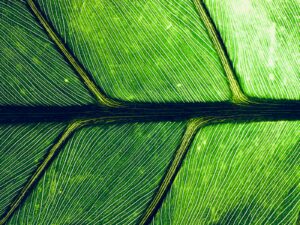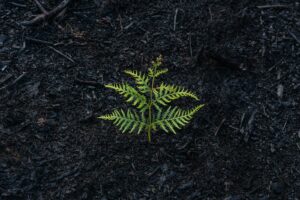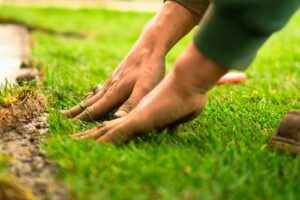Annabel Prow, one of the members of the B.I.G North Pole expedition writes for Environment Journal about their recent training trip to Iceland.
On October 29, 2021, I met my B.I.G North Pole teammates to fly to Iceland to commence the training for our expedition to the North pole in 2022. In April we will ski the last degree north, with the aim not just of reaching the Pole but to carry out vital sea ice research.
With the exception of Felicity Aston, we are not scientists; we have day jobs and families that we are leaving at home. We have jobs in construction, media, insurance, and fundraising but we are connected by the desire to make a contribution, to make a difference in the way that we can.
We flew into Keflavik, glancing at the awesome landscape below.
We had a long day and night ahead of us prepping for the expedition. We checked our tents; loaded food bags and roped our harnesses and sleds together. We packed, re-packed, packed, re-packed, checking that we have all the required kits.
The next morning, we departed Reykjavik in adapted arctic trucks, stopping briefly for our last hot meal for a week as we left all civilisation behind.
We headed to the Vatnjokull glacier which is Europe’s largest. This ice cap is home to over 24 outlet glaciers and 8 sub glacial volcanoes. Blue ice glimmers in the fading sun and we are all taken back by the vast, beautiful but hostile landscape.
Climate change has already reduced the size of the glacier and makes access difficult, but the trucks glide easily through icy rivers and up slopes with the trailer containing our large pulks bouncing behind. The location of the glacier means it can be subject to high winds and freezing temperatures. The drivers told us that many expeditions end with a rescue due to the constantly changing weather systems. We listened but are undaunted, we agreed our primary aim is to survive the week and in the sunshine, it feels possible.
Before we were left on the glacier, we spent one night in the Jokulheimar hut.
It is unmanned but charming with running water and a fire for warmth. This night was an opportunity for prep and learn tent skills.
We had to each master lighting the stoves, a vital skill for the expedition. We then prepared sample containers., As these containers will be used for samples of snow and ice that will be analysed for microplastics and lead we have to clean them with deionised water.
To prevent contamination of microplastics from clothes we all use natural fibre aprons, set up a team production line, and get to work. Before long we are tucking into our first dehydrated meal and going to sleep inside for the last time for a week.
The following morning, we were back in the trucks to the drop point, the wind was initially high but eased as we arrived. It was a strange feeling watching the trucks disappear over the horizon and to be left in this vast and beautiful landscape, just the 6 of us and our sleds.
We skied to our first camp, for two people it was their first-time skiing, but within minutes we were synchronised and learning arm signals to communicate. After all the planning it was amazing to be on skis. Felicity, our leader who has led many successful polar expeditions came alive in the landscape, grinning with excitement. We felt pleased that the sleds pulled with ease as in April we will be dragging up to 85kg, for many of us that is twice our body weight.
We pitched our tents as the wind picked up and soon the inside of the tent was blowing and it became hard to talk above the noise, we hunkered down and made hot drinks and food.
During the night one tent pole broke and a door blew open, both of which required us to dig to create more stability, it was a restless first night.
The wind continued for 3 days, and each day we checked in on the satellite phone we were told the winds were around 70mph. During those days we left the tent to dig, to go to the toilet, and to do snow and ice sampling. We held so tightly to the sample pots, and it was evidence of just how tricky science in the field can be.
Days in the tent proved to be great for team building. We spent time understanding the motivations of each team member. Team dynamics is a key part of the potential success of the expedition. I believe that the shared adversity created a bond that will serve us well in April.
A break in the weather allowed us to leave camp, we dismantled the tent and loaded up the pulks.
The truck returned carrying a super talented scientist from Bolder Colorado called Ulyana Horodyskyj. Ulyana taught us about the science. We learnt how to take snow and ice samples that will be analysed for black carbon, how to assess clouds and measure the snowpack and albedo.
Much of this information can be loaded in an app and we synchronised our data collection with satellites passing overhead. The satellites are unable to measure such things from above, so our work will help refine their knowledge and understanding. No data of this kind exists for the glacier or the North Pole. We felt privileged to have the opportunity to be able to contribute to such an amazing project.
The last test we carried out was filtering the snow and ice samples for black carbon. This allows us to reduce the weight of the samples getting to the North Pole.
The filters show the levels of black carbon. Even without a microscope, it was possible to see the difference in the samples from behind the truck tyre compared with samples from an remote location, proving that even a very small amount of human activity has a very big impact.
It left us all questioning how to reduce that impact. After a trip up to Grimsvotn, the otherworldly top of the glacier we were driven back, having successfully completed our training.
We were left captivated by the landscape, inspired by the science and with the enormity of the task we are facing dawning on us. All 6 of us felt privileged to have had that experience and proud of the resilience and achievements of 6 women who prior to the trip knew very little about the science and had only met each other for a few hours.
In related news, for more information about the expedition, listen to episode 7 of the Environment Journal Podcast where host Stephen Cirell interviews expedition leader Felicity Aston.
The publishers of Environment Journal are proud sponsors of the B.I.G North Pole expedition, to make sure you stay up to date with all of the latest updates make sure to subscribe to our newsletter.















